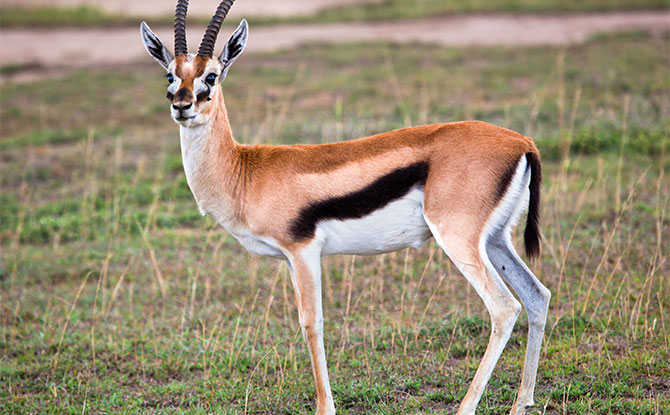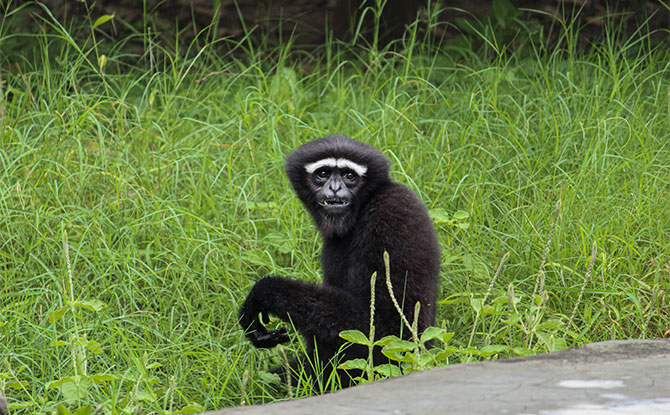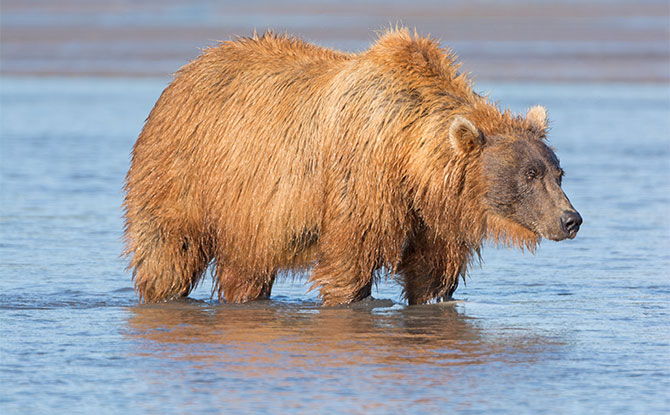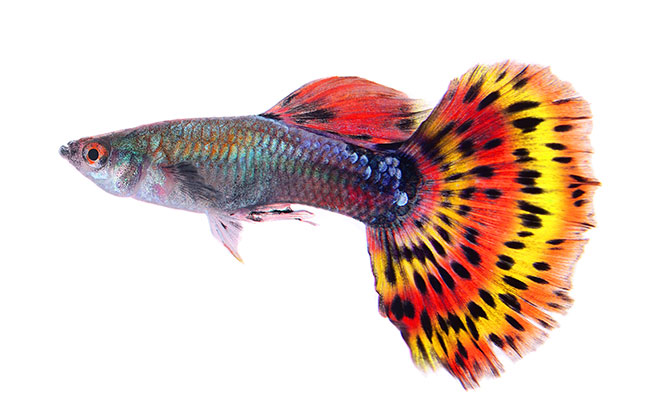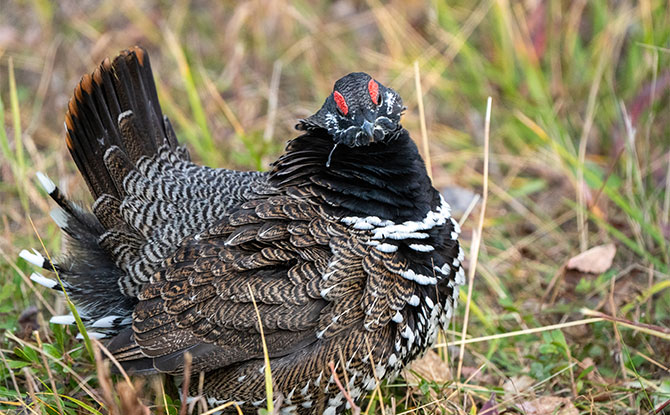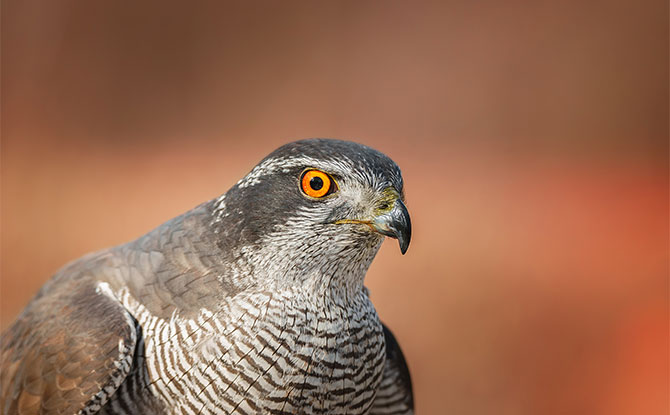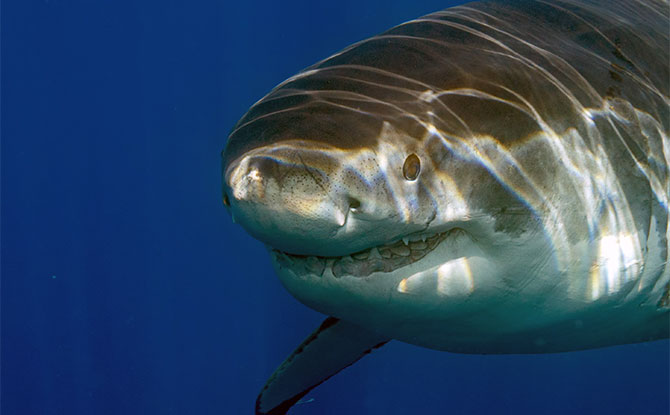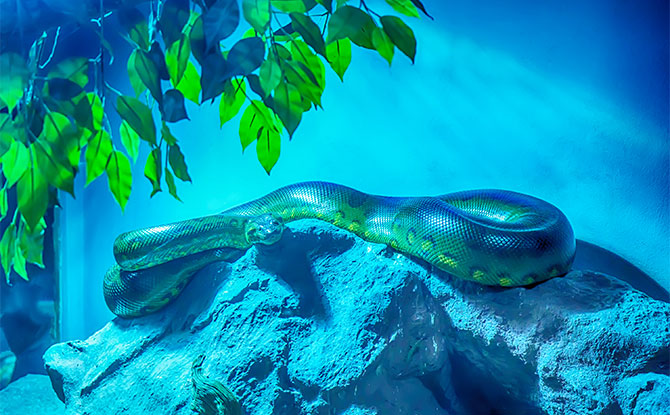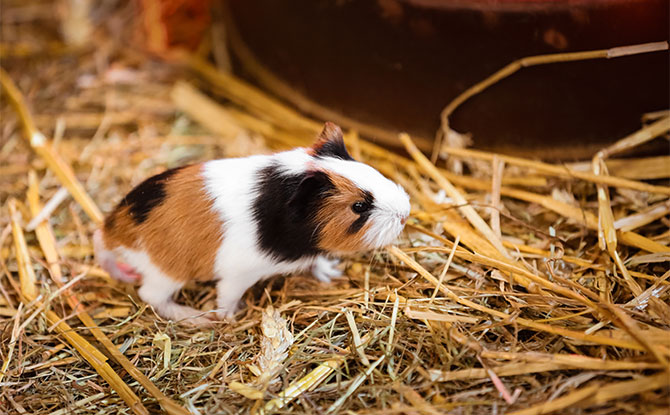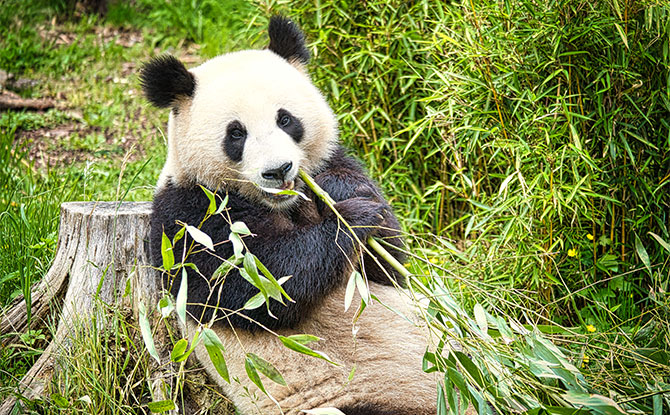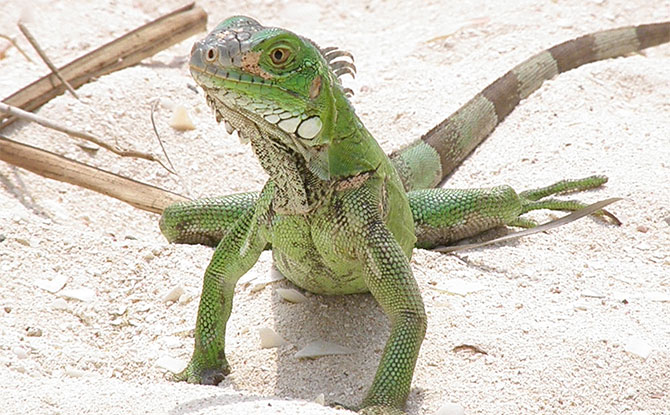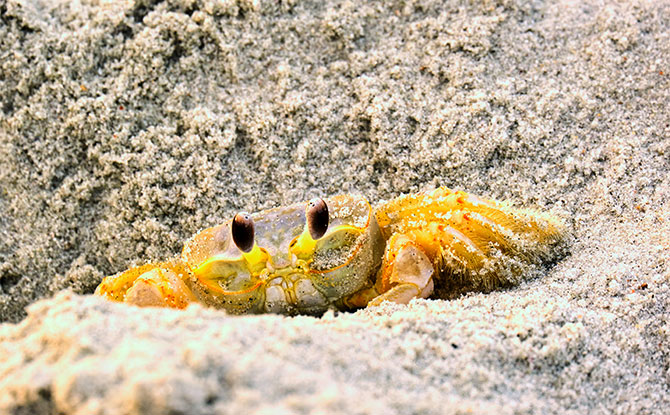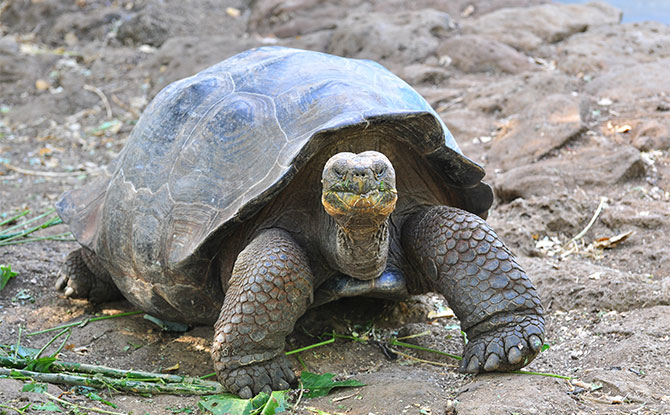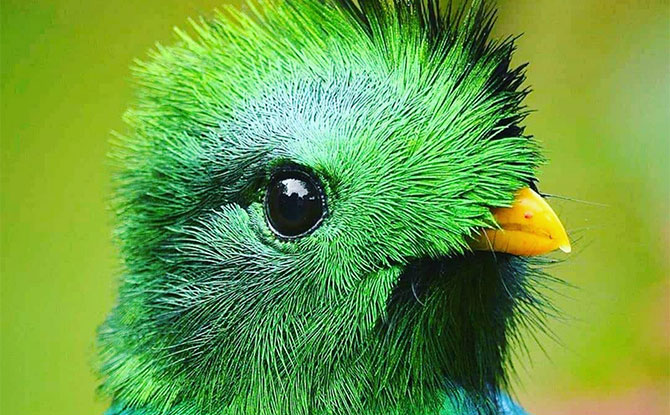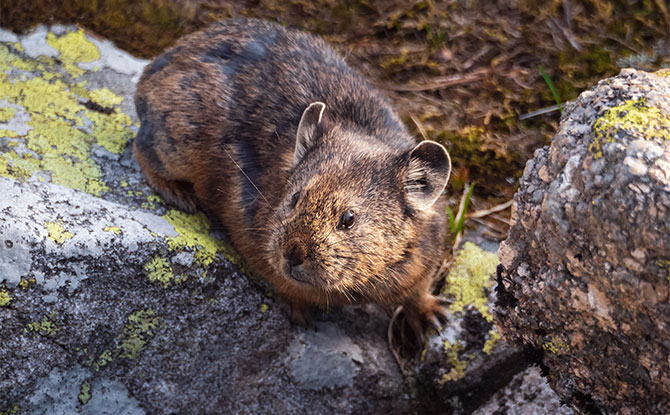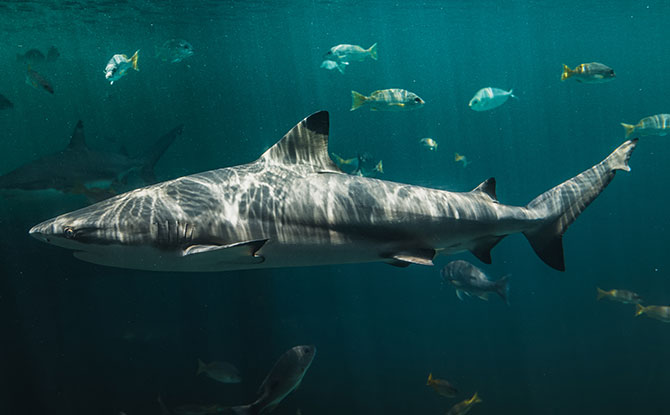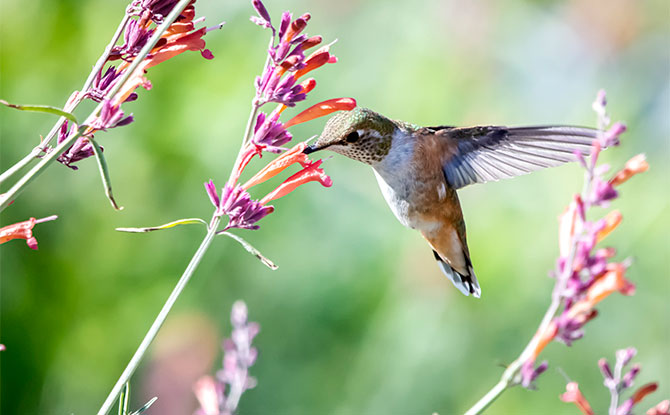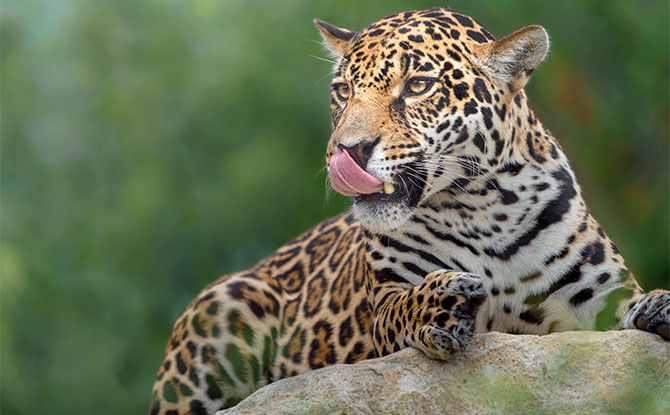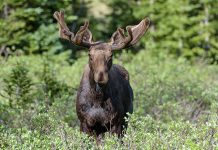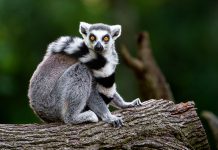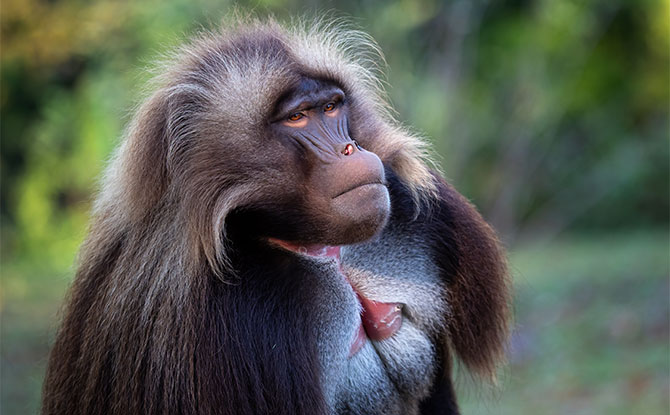
From the towering height of the Giraffe to the swift agility of the Gazelle, the animal kingdom never ceases to amaze with its diversity. We will be exploring just a few of the fascinating animals starting with the letter G.
The incredible animals whose names begin with the letter G in gorillas to the elusive gila monster. The animal world offers a fascinating array of species that start with G. Uncovering the wonders of the natural world with us.
35 Animals Start with G
Whether it’s the acrobatic abilities of the Gibbon, the powerful hunting skills of the Goshawk, or the gentle nature of the Golden Lion Tamarin, these animals that start with G showcase the wonders of the natural world.
Giraffe
FREE FOR LITTLE DAY OUT PARENTS: Sign Up for a Free Trial with ACT 3 Academy to Find Out If Drama Classes are Right for Your Child
3 Recycling Adventures: Fun Ideas For Kids & Families
1:1 & Small Group English Lessons: How to Get Personalised, English Help
The giraffe is a magnificent creature that captivates with its long neck, towering height, and distinct spots, the giraffe is truly one of a kind.
One of the most fascinating aspects of the giraffe is its adaptations for feeding. Its long neck allows it to reach vegetation that other animals cannot, giving it an advantage in finding food. The giraffe’s tongue, which can grow up to 20 inches long, is also specialized to help it pluck leaves from branches with precision.
When it comes to size, the giraffe is a true giant. It stands tall at an average height of 16 to 20 feet, with males being taller than females. Despite its height, the giraffe’s weight is surprisingly not excessive, with adult giraffes weighing around 2,600 to 3,000 pounds.
The elongated neck of the giraffe also serves as a powerful weapon during male-male combat. Males engage in a behavior known as “necking,” where they swing their necks at each other in a display of strength and dominance.
Their characteristic spots, which are like fingerprints, are unique to each individual and serve as a form of camouflage among the trees.
The giraffe’s distinctive appearance and extraordinary adaptations make it a true marvel of the animal kingdom. From its towering height to its long neck, the giraffe is a testament to the wonders of nature.
Gorilla
Gorillas are fascinating creatures that share a close genetic connection to humans. These incredible primates are known for their strength, intelligence, and gentle nature. Let’s explore the different types of gorillas and discover some interesting gorilla facts.
There are three main types of gorillas. The mountain gorilla is found in the dense forests of central Africa, specifically in the Virunga Mountains and Bwindi Impenetrable National Park. They are the largest gorilla species and are known for their thick fur and large size.
The western lowland gorilla is the most common type of gorilla and can be found in the lowland rainforests of western and central Africa. They have shorter hair and a smaller build compared to mountain gorillas.
The eastern gorilla is divided into two subspecies: the eastern lowland gorilla and the critically endangered mountain gorilla. They inhabit the rainforests of eastern and central Africa and are characterized by their robust build and longer hair.
Each type of gorilla has its own unique characteristics and adaptations that allow them to thrive in their specific habitats.
Goose
Geese are fascinating migratory birds that undertake long-distance journeys in search of suitable breeding and feeding grounds. Their annual migration patterns are a spectacle to behold, as these birds traverse vast distances and follow specific routes.
There are several types of geese that participate in migration, including the Canada Goose, Snow Goose, and Greylag Goose, among others. Each species has its own unique characteristics and adaptations that enable them to undertake these remarkable journeys.
Goose migration is driven by various factors, including the availability of food and suitable nesting sites. As seasons change and resources become scarce in one location, geese are compelled to undertake their migratory journeys to more favorable environments.
The migration routes taken by geese are often well-established and follow well-known pathways, known as flyways. These flyways, such as the Atlantic flyway and the Pacific flyway, guide geese along their migration routes, ensuring that they reach their desired destinations.
There are several reasons for goose migration. One primary reason is the availability of abundant food sources in different locations at different times of the year. By migrating to areas with abundant food, geese can successfully breed, raise their young, and ensure their survival.
Gazelle
Gazelles are graceful and swift antelopes that inhabit various ecosystems around the world. These remarkable animals are known for their agility, speed, and unique adaptations that allow them to thrive in different habitats.
One of the most interesting aspects of gazelles is their behavior. They exhibit social structure within their herds, forming small groups or larger aggregations depending on the species and environment. This social structure provides benefits such as increased predator detection and access to mates.
To survive in their often challenging environments, gazelles have developed effective predator evasion techniques. Their incredible speed, agility, and keen senses allow them to detect and escape from predators with remarkable efficiency. Gazelles can change direction rapidly, leap high into the air, and reach impressive speeds in a matter of seconds.
Gazelles also have specific habitat preferences, which vary depending on the species. Some gazelles inhabit grasslands, while others prefer deserts, woodlands, or mountainous regions. They are well-adapted to their chosen habitats, whether it be through their feeding habits, body size, or the coloration of their fur.
Gazelles are fascinating animals that exemplify elegance, speed, and adaptability. Through their behavior, social structure, predator evasion techniques, and habitat preferences, they have evolved to thrive in diverse environments. Understanding and appreciating these remarkable creatures is essential for their conservation and the preservation of the ecosystems they call home.
Gibbon
Gibbons are remarkable arboreal apes known for their acrobatic abilities and beautiful melodic calls. These primates belong to the family Hylobatidae and can be found in the dense forests of Southeast Asia. With their slender bodies and long arms, gibbons are perfectly adapted for life in the treetops.
There are approximately 20 different species of gibbons, each with its own unique characteristics and behaviors. Some of the most well-known gibbon species include the Siamang, Lar Gibbon, and White-handed Gibbon. These fascinating animals play a crucial role in maintaining the health and diversity of their forest ecosystems.
Grizzly Bear
Grizzly bears are magnificent creatures that can be found in various regions of North America. These large and powerful mammals are known for their distinctive appearance and formidable presence.
The habitat preferences of grizzly bears are diverse, ranging from forested areas to alpine meadows. They can be found in different habitats such as dense forests, grasslands, tundra, and mountainous regions.
The diet of grizzly bears consists of a wide range of food sources, including grasses, berries, nuts, roots, insects, fish, and even larger mammals. They are opportunistic feeders and have developed a versatile palate to adapt to the available food sources in their habitat.
Grizzly bears have a vast range that spans across North America, from Alaska and Canada to parts of the northwestern United States. Their territory can cover hundreds of square miles, allowing them ample space to roam and forage for food.
During the winter months, grizzly bears enter a period of hibernation. They build dens in which they can shelter and conserve energy during the colder months when food is scarce. This period of hibernation helps grizzly bears survive the harsh winter conditions.
Gecko
Geckos are a diverse group of lizards that have fascinated scientists and nature enthusiasts for centuries. These remarkable creatures have evolved a wide range of adaptations that allow them to thrive in various environments around the world.
One of the most impressive abilities of geckos is their climbing prowess. Geckos are known for their unique toe pads that enable them to scale vertical surfaces with ease. These toe pads are covered in microscopic hairs called setae, which create a strong adhesive force known as van der Waals forces. This allows geckos to stick to surfaces, even those that are smooth or upside down.
In addition to their climbing abilities, geckos have perfected the art of camouflage. Many geckos possess the ability to change their skin color or pattern to blend in with their surroundings. This adaptation helps them evade predators and hunt more effectively.
Another remarkable feature of geckos is their ability to regenerate their tails. When threatened or attacked, some gecko species have the remarkable ability to detach their tails as a distraction. The lost tail can then regenerate over time, allowing the gecko to escape and survive.
With over 1,500 different species, geckos come in a variety of shapes, sizes, and colors. From the tiny dwarf geckos to the large tokay geckos, each species has its own unique adaptations and characteristics.
Grasshopper
Grasshoppers are fascinating insects known for their jumping abilities and unique behaviors. In this section, we will explore the life cycle and behavior of grasshoppers, shedding light on their reproduction process, molting stages, and communication methods.
The life cycle of a grasshopper begins with the laying of eggs in the soil. Female grasshoppers use their ovipositor to deposit the eggs, which will eventually hatch into nymphs. These eggs are commonly laid in clusters and can survive throughout the winter, ensuring the continuity of the grasshopper population.
After the eggs hatch, the nymphs emerge and undergo a series of molting stages. During molting, a grasshopper sheds its old exoskeleton to accommodate its growth. This process allows the grasshopper to develop and mature, preparing it for adulthood. Each nymph stage is marked by an increase in size and the development of wings.
As grasshoppers grow and mature, they exhibit a range of fascinating behaviors. One of their most well-known behaviors is their ability to communicate through sound. Male grasshoppers produce distinctive songs by rubbing their wings or legs together. These songs serve as a means of attracting mates and establishing territory.
Grasshoppers are also known for their impressive jumping abilities. Their powerful hind legs enable them to propel themselves into the air with great force, allowing them to escape predators or navigate their environment. This unique adaptation gives grasshoppers a significant advantage in their natural habitat.
Goldfish
Goldfish are beautiful and popular freshwater fish that are relatively easy to care for. Goldfish come in various shapes, colors, and sizes, making them a delight to observe. Some popular goldfish varieties the Common Goldfish, the classic goldfish variety with a vibrant orange color and sleek body, the Comet Goldfish, known for their long, flowing tails, comet goldfish are graceful swimmers, and the Fantail Goldfish, recognized by their double tail and round body shape, fantail goldfish are a favorite among hobbyists.
Guppy
Guppies are small and colorful fish that are highly popular in home aquariums. They are known for their vibrant color varieties and unique tail types, making them a favorite among aquarium enthusiasts.
One of the most exciting aspects of guppies is their wide range of color varieties. From vibrant reds and blues to striking yellows and greens, guppies offer a rainbow of possibilities. Breeders have developed different strains with specific color patterns, allowing hobbyists to create visually stunning displays in their aquariums.
Additionally, guppies exhibit various tail types, which further adds to their allure. The tail types can range from the classic fan-shaped tail to the elegant veil tail, the unique swordtail, or the striking delta tail. Each tail type has its own distinct appearance and swimming style.
Grouse
Grouse are medium-sized birds known for their elaborate courtship displays and distinct calls. They belong to the family Phasianidae, which also includes pheasants and turkeys. There are several different types of grouse, each with its own unique characteristics and habits.
During the breeding season, male grouse engage in impressive courtship displays to attract females. These displays involve a combination of vocalizations, visual displays, and posturing. The purpose of these elaborate displays is to establish dominance and secure a mate.
Grouse mating rituals are fascinating to observe. Male grouse will often gather in a specific area called a lek, where they perform their courtship displays. These displays can involve puffing out their chest feathers, fanning their tails, and producing distinctive calls. The females, known as hens, will visit the lek and choose a mate based on the displays they find most impressive.
Their diet primarily consists of plant matter such as leaves, buds, seeds, and berries. Some types of grouse, like the sage grouse, have specialized adaptations to their specific habitats.
Goshawk
Goshawks are powerful raptors known for their impressive hunting abilities. These birds of prey have specific adaptations that enable them to excel in their natural environment.
Goshawks are commonly found in a variety of habitats, including forests, woodlands, and mountainous areas. Their preferred habitats offer a combination of open spaces for hunting and dense vegetation for nesting and roosting.
When it comes to hunting, goshawks exhibit remarkable agility and stealth. They have a diverse diet that includes a wide range of prey, such as small mammals, birds, and even other raptors. Goshawks use their incredible flight techniques, combining speed, maneuverability, and sharp talons, to capture their prey with precision.
Goshawks are also known for their nesting habits. They build large and sturdy nests in the forks of trees, usually high off the ground. These nests provide a safe and secure place for goshawks to raise their young and protect them from predators.
Great White Shark
The great white shark is a legendary predator of the ocean known for its impressive size and formidable jaws. This apex predator holds a vital role in maintaining the balance of marine ecosystems.
When examining the anatomy of a great white shark, their streamlined body and powerful muscles contribute to their incredible agility and speed in the water. Their sleek design allows them to navigate the ocean with ease, enabling them to swiftly pursue their prey.
One of the most fascinating features of the great white shark is its set of teeth. Sharply serrated and capable of growing up to 3 inches in length, these teeth are designed for tearing and gripping prey. Their teeth are not fixed in the jaw but rather replaceable, with new teeth continuously growing in rows behind the front ones.
Feeding habits of great white sharks primarily consist of a diet of marine mammals, fish, and other sharks. These hunters employ a stealthy approach, stalking their prey before launching a swift, surprise attack. With impressive speed and strength, they are able to deliver a devastating bite that incapacitates their prey.
The great white shark’s reputation as a top ocean predator extends to its predation behavior. Their hunting strategies include breaching the water surface to surprise and seize prey, as well as circling beneath their prey, using stealth and patience before striking.
In addition to their hunting prowess, great white sharks are known for their impressive migratory patterns. These majestic creatures travel vast distances, often crossing entire ocean basins in search of more abundant food sources or participating in breeding and mating rituals. Their migrations play a crucial role in maintaining the biodiversity and balance of marine ecosystems.
Greyhound
Greyhounds are elegant and agile dogs known for their incredible speed. They are built for running, with a slim and muscular body designed for maximum efficiency. Greyhound racing is a popular sport that showcases the breed’s impressive athletic abilities.
The temperament of greyhounds is generally calm and gentle, making them excellent companion animals. They are known to be affectionate and loyal, forming strong bonds with their owners.
Greyhounds have been selectively bred for centuries to achieve exceptional speed. With their slender physique and long legs, they are capable of reaching impressive velocities. It is not uncommon for a greyhound to reach speeds of up to 45 miles per hour.
Green Anaconda
The green anaconda is a fascinating creature that holds the title for being one of the largest snakes in the world. Known for its impressive size and aquatic lifestyle, the green anaconda is a mighty predator that resides in the swamps, marshes, and slow-moving rivers of South America.
When it comes to size, the green anaconda doesn’t disappoint. These massive snakes can reach lengths of up to 30 feet and can weigh over 500 pounds. Their colossal bodies are covered in a beautiful pattern of green scales, allowing them to blend seamlessly into their lush, aquatic habitats.
Green anacondas are true water dwellers, spending the majority of their lives in or near freshwater ecosystems. They possess a set of unique adaptations that enable their aquatic lifestyle. Their eyes and nostrils are positioned on the top of their heads, allowing them to stay partially submerged while keeping a watchful eye on their surroundings.
As for their diet, green anacondas have an impressively varied menu. While they primarily feed on aquatic prey such as fish, turtles, and caimans, they are also known to take on larger mammals, such as capybaras and deer. These powerful constrictors use their immense size and strong muscles to overpower their prey and suffocate them.
Green Turtle
Green turtles are majestic marine reptiles known for their distinct green color and migratory behavior. These turtles inhabit various coastal areas and are found in warm waters around the world. They have a unique diet consisting mainly of seagrasses and algae, which gives their flesh a green hue and their name.
The habitat preferences of green turtles include tropical and subtropical waters, with sandy or coral reef habitats. They are often found in the coastal areas of countries such as Costa Rica, Australia, and the Maldives. Green turtles are also known for their nesting behavior, as females return to the same beaches where they were born to lay their eggs. These nesting sites are carefully chosen and require specific conditions, such as sandy beaches and adequate protection.
Migration is an important aspect of the green turtle’s life cycle. These turtles have been observed migrating long distances between their feeding and nesting grounds. For example, some green turtles found in the Coral Triangle region travel thousands of kilometers to reach their nesting sites.
Golden Eagle
Golden eagles are majestic raptors known for their impressive wingspan and predatory skills. These magnificent birds can be found in a wide range of habitats, from mountainous regions to open plains. Their hunting strategies are diverse and adaptable, allowing them to take advantage of different prey species and environments.
Golden eagles are skilled hunters, relying on their keen eyesight and powerful talons to catch their prey. They have a varied diet, which can include small mammals, birds, reptiles, and even carrion. Their nesting habits are also fascinating, as they construct large nests called eyries on cliffs or in tall trees.
One of the most remarkable aspects of golden eagles is their flight characteristics. They have a broad, rounded wing shape that allows for efficient soaring and gliding. Their wingspan can reach up to 7 feet, making them highly adept at navigating their expansive range.
Guinea Pig
Guinea pigs are adorable small pets that are known for their social nature and make wonderful companions. Taking care of guinea pigs involves providing them with the right housing, meeting their dietary needs, and understanding the different breeds available.
When it comes to housing, guinea pigs require a spacious and safe environment. A large cage with plenty of room for them to move around is essential. It’s important to choose a cage with a solid bottom to prevent injury to their feet. Additionally, providing them with hiding places and tunnels will help simulate their natural habitat and keep them entertained.
There are several popular guinea pig breeds available, each with its own unique traits and characteristics. Some popular breeds include the Abyssinian, American, Peruvian, and Teddy guinea pigs. Each breed has different coat lengths and textures.
German Shepherd
German Shepherds are highly versatile and intelligent dogs that are cherished for their loyalty and protective instincts. They are known to be a popular choice as both working dogs and family pets. Let’s explore the key aspects of the German Shepherd breed, including their temperament, training, intelligence, working abilities, and the importance of early socialization.
When it comes to temperament, German Shepherds are often described as confident, courageous, and obedient. They are known for their strong bond with their owners and their natural instinct to protect their loved ones. These dogs are also known for their high levels of energy and need for regular exercise and mental stimulation.
German Shepherds are highly intelligent and quick learners. They are often used for various tasks that require problem-solving skills, such as search and rescue, police work, and even as service dogs. Their intelligence makes them highly trainable, and they excel in obedience training and various dog sports.
The working abilities of German Shepherds are exceptional. They are known for their versatility in performing different tasks, ranging from herding livestock to serving as police dogs and search and rescue animals. Their strength, endurance, and natural protective instincts make them excellent working dogs in various fields.
Giant Panda
The giant panda is an iconic species known for its adorable appearance and bamboo diet. These gentle giants are native to the mountainous regions of China, where they inhabit dense bamboo forests. Their unique habitat requirements and conservation status make them a symbol of wildlife preservation efforts.
Giant pandas are primarily found in the southwestern provinces of Sichuan, Shaanxi, and Gansu. They rely on these bamboo-rich habitats for their main source of food, which consists mostly of bamboo leaves, stems, and shoots. These bamboo forests provide the perfect environment for pandas to roam and forage.
Gelada
Geladas are fascinating primates native to Ethiopia, known for their unique appearance and complex social structures. These charismatic animals have a distinct social organization and exhibit various interesting behaviors that contribute to their survival and success in their natural habitat.
The gelada social structure is highly organized and revolves around a hierarchical system. A gelada troop usually consists of one dominant male, several females, and their offspring. The dominant male, also known as the leader or alpha male, holds the highest rank and has exclusive mating rights.
Geladas are primarily herbivorous and have specialized feeding habits. They mainly feed on grass, and their long, strong fingers and sharp nails help them grip and collect the grass. Geladas also have large, elongated canines that they use for stripping the grass from its base.
Grooming rituals play a significant role in gelada society. Grooming is not only a way to maintain hygiene but also acts as a form of social bonding. Geladas engage in mutual grooming, where they pick through each other’s fur, removing parasites and strengthening social bonds within the troop.
Communication is vital for geladas, and they have a range of vocalizations and gestures that they use to convey information and maintain social cohesion. They have a complex system of calls, vocalizations, and body postures that they use to signal various intentions and emotions to other members of their troop.
Golden Lion Tamarin
The Golden Lion Tamarin is a small and colorful monkey species that is native to the Atlantic Forest of Brazil.
They are known for their vibrant golden-orange fur, which gives them their distinctive name. These endangered primates have a unique habitat preference for the dense and humid forests of the Atlantic Forest, a biome that is rapidly disappearing due to deforestation.
Green Tree Python
The Green Tree Python, scientifically known as Morelia viridis, is a striking and arboreal snake native to the rainforests of New Guinea and nearby islands. As the name suggests, this python species has a vivid green coloration that allows it to blend seamlessly with the lush foliage of its habitat.
The Green Tree Python’s habitat preferences include the dense canopies of tropical rainforests, where it spends most of its life coiled around tree branches. This arboreal lifestyle not only provides protection from predators but also allows the python to ambush its prey more efficiently.
The behavior of Green Tree Pythons is characterized by their calm and docile nature, especially when undisturbed. Despite their venomous bites, they pose little danger to humans as they are generally non-aggressive unless provoked. These snakes are known for their unique hunting techniques, which involve ambushing prey, such as birds and small mammals, from above while perched on tree branches.
In terms of diet, Green Tree Pythons are carnivorous and primarily feed on small vertebrates, including rodents, birds, and lizards. They have a specialized feeding strategy where they strike quickly, immobilize their prey, and then consume it whole. The python’s strong coils and sharp teeth ensure a successful capture and efficient digestion of their meals.
Reproduction in Green Tree Pythons is oviparous, meaning that females lay eggs. Mating typically occurs in the rainy season, and females will lay a clutch of 10-30 eggs. These eggs are then incubated by the heat of the environment until they hatch, which usually takes around 60-70 days.
One of the most fascinating aspects of Green Tree Pythons is their remarkable ability to camouflage among tree branches. Their vibrant green coloration, combined with their ability to flatten their bodies and hold on to branches with their prehensile tails, allows them to blend perfectly with their surroundings. This natural camouflage helps them stay hidden from both predators and potential prey.
Green Iguana
Green iguanas are captivating reptiles that make popular pets for reptile enthusiasts. They are known for their vibrant coloration, unique behaviors, and impressive size.
Ghost Crab
Ghost crabs are fascinating and elusive creatures known for their ability to blend with their sandy beach habitats. These small crabs, also known as sand crabs, are found on sandy shorelines all around the world. Their unique coloration enables them to camouflage with the sand, making it difficult for predators to spot them.
Ghost crabs are primarily nocturnal, displaying most of their activities during the night. They have adapted to their beach habitat by developing a specialized respiratory system that allows them to breathe both in air and water. Their gills are located in specialized chambers that lock in moisture, enabling them to survive in the intertidal zone.
When it comes to their diet, ghost crabs are opportunistic scavengers. They feed on a variety of items, including small mollusks, insects, small crustaceans, and decaying organic matter. They are known to scavenge on the beach for food and can consume both plant and animal material.
Burrowing is an essential behavior for ghost crabs, as they create burrows in the sand for shelter and protection. These burrows not only provide them with a safe place to hide from predators but also help them regulate their body temperature. Ghost crabs are most active during the warm summer months, especially at night when the sand temperature is cooler.
Gila Monster
Gila monsters are fascinating and unique lizards that inhabit the desert regions of the southwestern United States and northern Mexico. Known for their distinctive black and orange bead-like patterns, these venomous reptiles have captured the curiosity of both scientists and reptile enthusiasts.
The gila monster prefers a specific habitat of arid and rocky landscapes, such as desert scrublands and semi-arid grasslands. These areas provide the perfect conditions for the gila monster’s survival, including access to burrows for shelter and the availability of prey.
One of the most notable characteristics of the gila monster is its venomous bite. The saliva of the gila monster contains a potent neurotoxin that can cause significant harm to its prey, including birds and small mammals. While the venom is not typically fatal to humans, a bite from a gila monster can cause intense pain and should be avoided.
The diet of gila monsters consists mainly of small animals, such as rodents, birds, eggs, and even carrion. They have a slow metabolism and are capable of surviving on very little food for extended periods. This adaptation allows them to thrive in their harsh desert environment where food resources can be scarce.
Gila monsters have also developed various adaptations to cope with the desert conditions. Their thick, bumpy skin helps them retain moisture and provides protection from predators. They also have the ability to store fat in their tails, which can be used as an energy reserve during periods of food scarcity.
Grey Wolf
Grey wolves are magnificent carnivores known for their distinctive characteristics and important role in ecosystems. Let’s take a closer look at their habitat, pack behavior, diet, communication methods, and hunting techniques.
The grey wolf, scientifically known as Canis lupus, is found in a wide range of habitats, including forests, tundra, grasslands, and mountains. These adaptable animals can thrive in various environments, from the Arctic to the deserts.
One of the most fascinating aspects of grey wolves is their pack behavior. They are highly social animals that live in hierarchical family units called packs. These packs consist of an alpha pair, their offspring, and sometimes other unrelated wolves. The pack structure is essential for cooperation in hunting, protecting territory, and raising pups.
The diet of grey wolves primarily consists of ungulates such as deer, elk, moose, and caribou. They are skilled predators that use a combination of intelligence, teamwork, and agility to catch their prey. When hunting, wolves employ various strategies, including chasing, ambushing, and surrounding their target.
Communication plays a crucial role within wolf packs. They use a complex system of vocalizations, body language, and scent marking to communicate with each other and establish social bonds. The iconic howl of a wolf serves as a means of long-distance communication, assisting in pack coordination and territorial signaling.
Grey wolves are highly skilled hunters and employ different hunting techniques depending on the circumstances. They can pursue their prey over long distances, work together to bring down larger animals, and implement strategies to outsmart their prey, such as herding or isolating individuals.
Galapagos Tortoise
The Galapagos tortoise is a magnificent giant reptile that is native to the Galapagos Islands. These unique creatures are known for their long lifespan and fascinating adaptations that have allowed them to thrive in their natural habitat.
The habitat preferences of the Galapagos tortoise are primarily terrestrial, with different species occupying specific zones within the archipelago. They can be found in a variety of habitats including grasslands, dry forests, and volcanic slopes. These tortoises have also adapted to survive in arid conditions, often finding refuge in areas with access to water sources.
The Galapagos tortoise has a remarkable lifespan that can span over a century. Many individuals have been known to live for more than 100 years, making them one of the longest-living vertebrates on the planet. This longevity is thought to be a result of their slow growth, low metabolic rate, and the absence of natural predators in their habitat.
When it comes to diet, Galapagos tortoises are primarily herbivorous. They feed on a variety of plant species, including grasses, cacti, and leaves. These tortoises have specialized adaptations in their jaws and teeth that enable them to efficiently consume tough vegetation, making them important seed dispersers in their ecosystem.
Galapagos tortoises have unique reproductive strategies that vary between species. Some tortoises migrate to specific breeding grounds, known as nesting sites, where females lay their eggs. The nesting process involves carefully choosing a suitable location, excavating a hole in the ground, and burying the eggs. After an incubation period, the hatchlings emerge and make their way to the nearest vegetation.
Green Sea Turtle
Green sea turtles are graceful marine reptiles known for their vibrant coloration and fascinating migratory behavior. These magnificent creatures can be found in coastal waters around the world, with a particular affinity for tropical and subtropical regions.
The habitat of green sea turtles encompasses a wide range of marine environments, including coral reefs, seagrass beds, and coastal lagoons. These turtles are highly migratory, traveling long distances between feeding grounds and nesting beaches. Their migration patterns are influenced by factors such as temperature, availability of food, and breeding cycles.
The diet of green sea turtles consists primarily of seagrass, algae, and other marine vegetation. Their strong jaws and beak-like mouths allow them to forage on seagrass beds and extract the nutritious plant material. This diet contributes to their unique green coloration, as algae pigments accumulate in the turtle’s tissues over time.
When it comes to nesting, green sea turtles display an incredible nesting instinct. Female turtles return to the same beach where they were born to lay their eggs. They dig deep nests in the sand and carefully bury their clutch of eggs before returning to the ocean. The nesting process is a critical time for these turtles, as they are vulnerable to predation and human disturbance.
From their vibrant coloration to their impressive migration journeys, green sea turtles are a testament to the wonders of the natural world.
Gila Woodpecker
Gila woodpeckers are fascinating birds that are well-adapted to their desert habitats. These charismatic birds can be found in the southwestern United States and northern Mexico. They have distinctive black and white patterns on their feathers, with flashes of red on the top of their heads. The gila woodpecker is known for its unique behaviors, including its diet, nesting habits, and communication methods.
The gila woodpecker primarily feeds on a variety of insects, fruits, and tree sap. They use their strong beaks to excavate cavities in saguaro cacti, which serve as their nesting sites. These cavities also provide protection from predators and extreme desert temperatures. The woodpeckers utilize their strong legs and tail for stability as they drill into the cacti.
When it comes to communication, gila woodpeckers have a variety of vocalizations. They use a drumming sound to communicate with other woodpeckers and establish their territory. Additionally, males often perform a courtship display where they make a series of calls to attract a mate.
The gila woodpecker is an important species in its ecosystem because it aids in the dispersal of saguaro cacti seeds. As the woodpecker excavates cavities in the cacti, it inadvertently helps facilitate the growth of new saguaros. This symbiotic relationship between the woodpecker and the cactus is crucial for maintaining the biodiversity of the desert ecosystem.
The gila woodpecker is a remarkable bird that has adapted well to its harsh desert environment.
Green Mamba
The Green Mamba, scientifically known as Dendroaspis angusticeps, is a highly venomous snake species found in parts of sub-Saharan Africa. This striking serpent is characterized by its vibrant green coloration and slender body, making it a captivating sight for both herpetology enthusiasts and nature lovers.
The Green Mamba is primarily found in the tropical rainforests and savannahs of West and Central Africa. It has a preference for dense vegetation, such as trees, shrubs, and tall grasses, where it can find suitable perches and abundant prey.
The Green Mamba possesses potent neurotoxic venom that is highly effective in paralyzing its prey. Its venom contains a mix of toxins that affect the nervous system, leading to respiratory failure and ultimately, death. Despite its toxicity, the Green Mamba is a shy and elusive snake, and human encounters are rare.
It is a carnivorous snake that primarily feeds on small mammals, birds, and reptiles. It uses its stealth and agility to hunt and capture its prey, delivering a swift and deadly bite. Once the prey is immobilized, the Green Mamba will consume it whole.
Green Mambas are known for their incredible speed and agility, allowing them to swiftly navigate their arboreal habitats in search of prey. They rely on their excellent vision and scent detection to locate potential meals, often ambushing their unsuspecting victims from concealed positions.
Golden Poison Frog
The golden poison frog is a small and brightly colored amphibian that is native to the rainforests of Central and South America. These frogs are known for their potent toxicity, which is considered one of the most toxic substances in the animal kingdom.
The habitat preferences of golden poison frogs are typically found in the tropical rainforests, where they thrive in the moist and humid environments. They are often found in leaf litter, on the forest floor, or climbing among the vegetation.
The toxicity of the golden poison frog is due to the presence of batrachotoxins in its skin. These toxins are derived from the frogs’ diet of small invertebrates such as ants and beetles, which contain alkaloids that are sequestered by the frogs and used for defense.
Glass Frog
Glass frogs are captivating amphibians that inhabit the lush rainforest habitats of Central and South America. What sets them apart from other frogs is their remarkable translucency, which allows you to see their internal organs through their skin. This unique trait makes them appear as if they are made of glass, hence their name.
Glass frogs are primarily found in the tropical rainforests and cloud forests of Central and South America. They prefer areas with plenty of vegetation, such as trees and shrubs, near streams and rivers. Their habitat provides them with the necessary moisture and shelter for survival.
Aside from their transparent skin, glass frogs possess other fascinating traits. They have distinctively large eyes that are positioned forward, giving them binocular vision and enabling them to accurately judge distances when leaping between branches. Additionally, their feet are equipped with adhesive pads, which allow them to climb and cling to surfaces with ease.
The most intriguing aspect of glass frogs is undoubtedly their transparent skin. This adaptation serves a dual purpose. Firstly, it allows them to camouflage seamlessly into their environment, making them difficult for predators to spot. Secondly, their translucent skin enables them to hide their eggs on the underside of leaves, providing protection from potential predators.
Great Horned Owl
Great horned owls are iconic nocturnal birds of prey known for their distinctive ear tufts and powerful talons. These majestic owls can be found throughout North and South America, inhabiting a wide range of habitats including forests, deserts, and urban areas.
The great horned owl’s diet consists primarily of small mammals such as mice, rabbits, and squirrels, but they are opportunistic hunters and will also prey on birds, reptiles, and amphibians. Their adaptability and hunting skills make them highly successful predators.
When it comes to nesting, great horned owls are known for their ability to utilize a variety of nest sites, including abandoned nests of other birds or even natural cavities in trees. They typically begin nesting in late winter or early spring.
These magnificent creatures have evolved various adaptations that allow them to thrive in their environments. Their large eyes enable excellent low-light vision, while their soft feathers provide effective noise reduction during flight and silent hunting.
The Wonderful of Animals Starting with the Letter G
It is crucial that we understand and appreciate these animals, as well as their habitats. Conservation efforts play a vital role in protecting endangered species like the Green Turtle and the Galapagos Tortoise. By raising awareness and supporting these initiatives, we can help ensure the survival of these incredible creatures for future generations.
If you enjoyed this story, you may also enjoy this story on animals starting with F.







